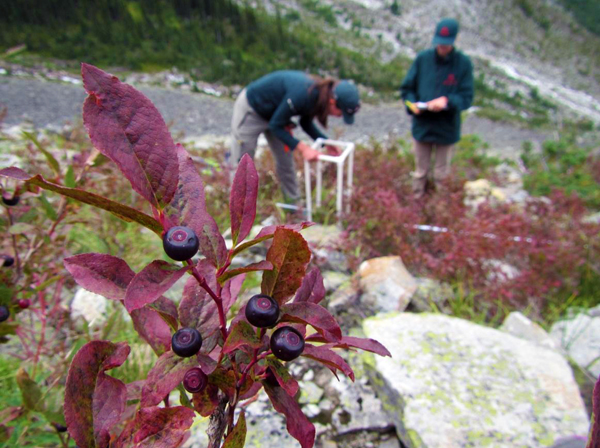
By Parks Canada staff
Huckleberries – shiny, blue-black and juicy, these sweet berries are a food source for many wildlife species and bears love ’em! In late summer, early fall, up to 89% of a grizzly bear’s diet can be made up of huckleberries – as evidenced by their purple droppings. It’s amazing to see how many berries a bear consumes.
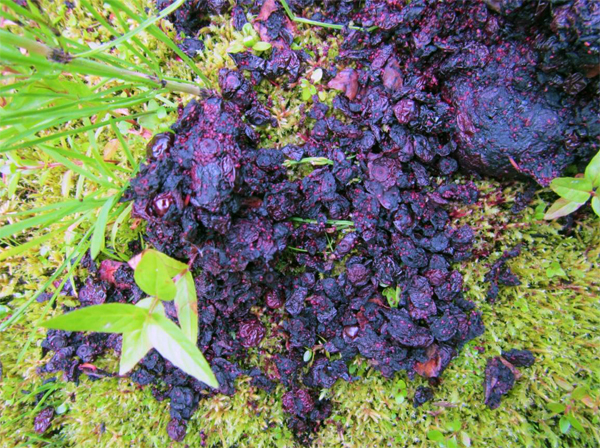
Parks Canada understands that huckleberries are an important food source for black and grizzly bears in the Selkirks, and this summer a pilot study was conducted on black huckleberry (Vaccinium membranaceum), in Mount Revelstoke and Glacier national parks to learn more about huckleberry distribution and production.
By gathering data on where huckleberry bushes are and how healthy and productive the berry crops are, Parks Canada can establish base line data that can then be compared to future years. Patterns will be looked for over time to help forecast good and poor berry crop years – and since bears go where the berries are, Parks Canada may be able to predict bear foraging activity and reduce human-bear interactions.
The first step was to map out huckleberry terrain. Using a GIS-based mapping tool, they were able to determine suitable locations before checking sites on foot.
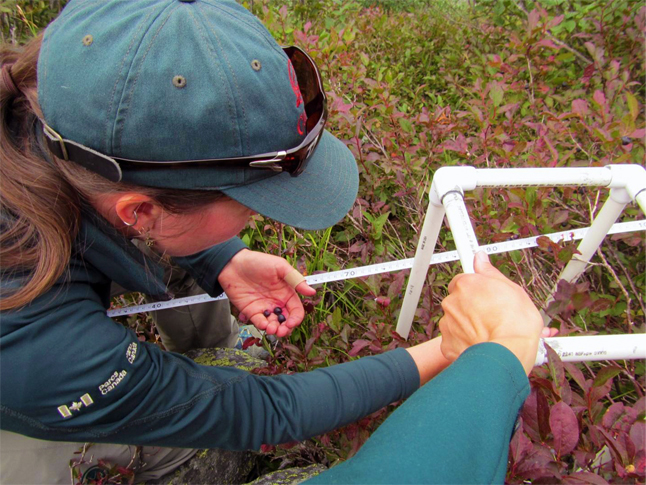
Staff then visited the areas of consideration to determine if there was black huckleberry present (and there was) and they selected specific locations representative of both parks in order to gather a broader picture of berry production. Nine sites were selected in Mount Revelstoke National Park and seven in Glacier National Park. Staff then developed a berry monitoring protocol and established long-term monitoring plots that can be assessed each year.
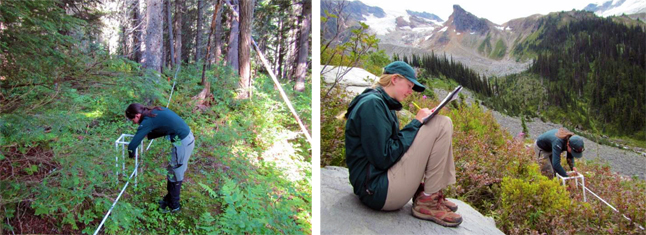
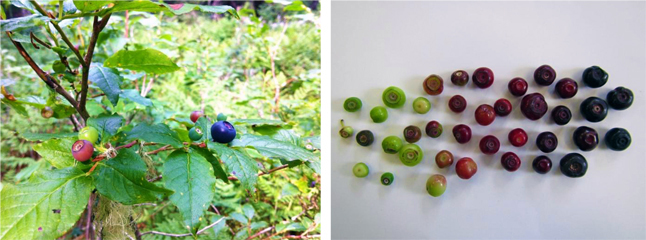
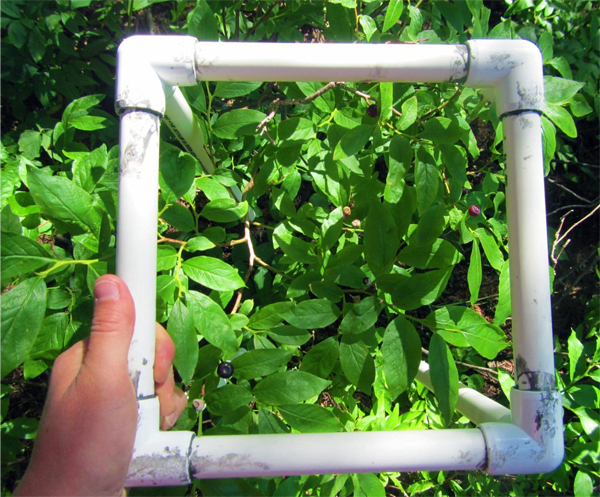
Plots were chosen from 3 elevation gradients (low, mid, high elevations) where huckleberries were found. Researchers then selected a start point, recorded the GPS coordinates and then placed a 20×20 cm quadrat (square frame) every 0.5 metre in a straight line. Berries in the frame were counted, assessed and categorized (ripe, unripe, diseased etc). Ripe berries were weighed while wet, and saved for drying, after which they will again be weighed.
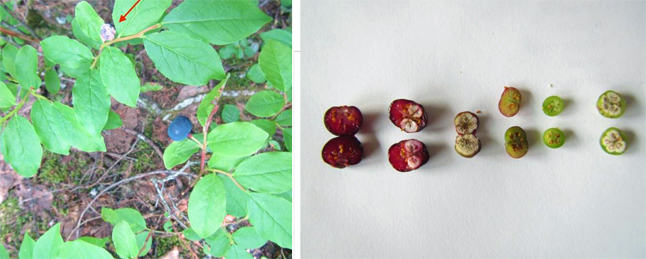
From this first season of study, staff found that berry production (determined by number of berries found) was greater in high elevation areas compared to mid and low elevation. They also discovered more diseased berries than they had anticipated, especially Mummy berry disease (Monilinia).
Over time, the data collected can be compared to weather factors such as temperature, precipitation and snow depth to determine if they influence berry production. If crop variability can be predicted by weather patterns, then berry production monitoring could be potentially replaced by an annual analysis of weather data.

Results on the huckleberry research are preliminary, but the project shows how Parks Canada contributes to the goals of the National Conservation Plan by safeguarding and enhancing biodiversity and ecosystems through conservation and stewardship actions. Over the long-term, the data will prove invaluable towards the health of the park and for managing human-bear interactions.



